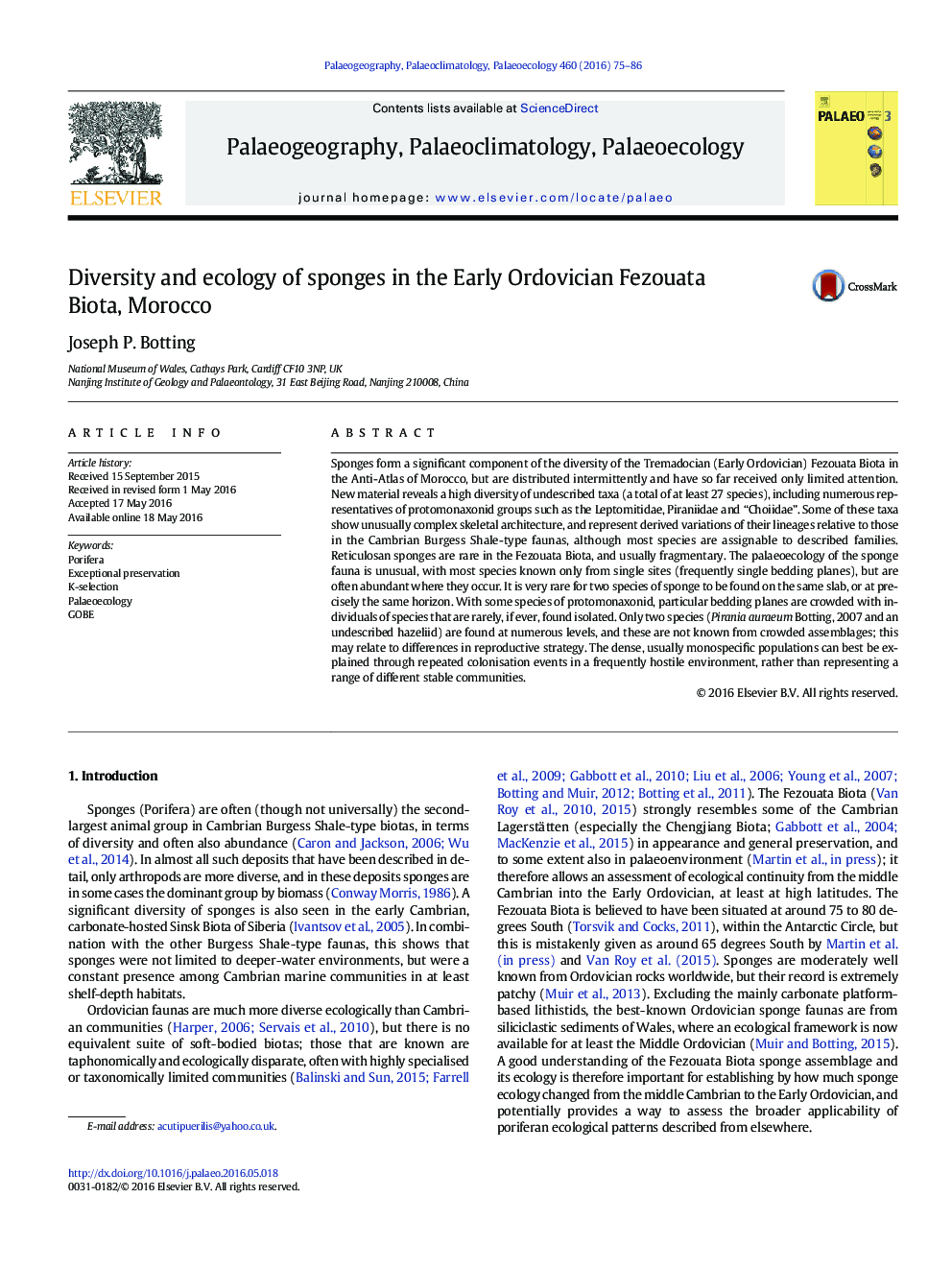| Article ID | Journal | Published Year | Pages | File Type |
|---|---|---|---|---|
| 4465564 | Palaeogeography, Palaeoclimatology, Palaeoecology | 2016 | 12 Pages |
Sponges form a significant component of the diversity of the Tremadocian (Early Ordovician) Fezouata Biota in the Anti-Atlas of Morocco, but are distributed intermittently and have so far received only limited attention. New material reveals a high diversity of undescribed taxa (a total of at least 27 species), including numerous representatives of protomonaxonid groups such as the Leptomitidae, Piraniidae and “Choiidae”. Some of these taxa show unusually complex skeletal architecture, and represent derived variations of their lineages relative to those in the Cambrian Burgess Shale-type faunas, although most species are assignable to described families. Reticulosan sponges are rare in the Fezouata Biota, and usually fragmentary. The palaeoecology of the sponge fauna is unusual, with most species known only from single sites (frequently single bedding planes), but are often abundant where they occur. It is very rare for two species of sponge to be found on the same slab, or at precisely the same horizon. With some species of protomonaxonid, particular bedding planes are crowded with individuals of species that are rarely, if ever, found isolated. Only two species (Pirania auraeum Botting, 2007 and an undescribed hazeliid) are found at numerous levels, and these are not known from crowded assemblages; this may relate to differences in reproductive strategy. The dense, usually monospecific populations can best be explained through repeated colonisation events in a frequently hostile environment, rather than representing a range of different stable communities.
